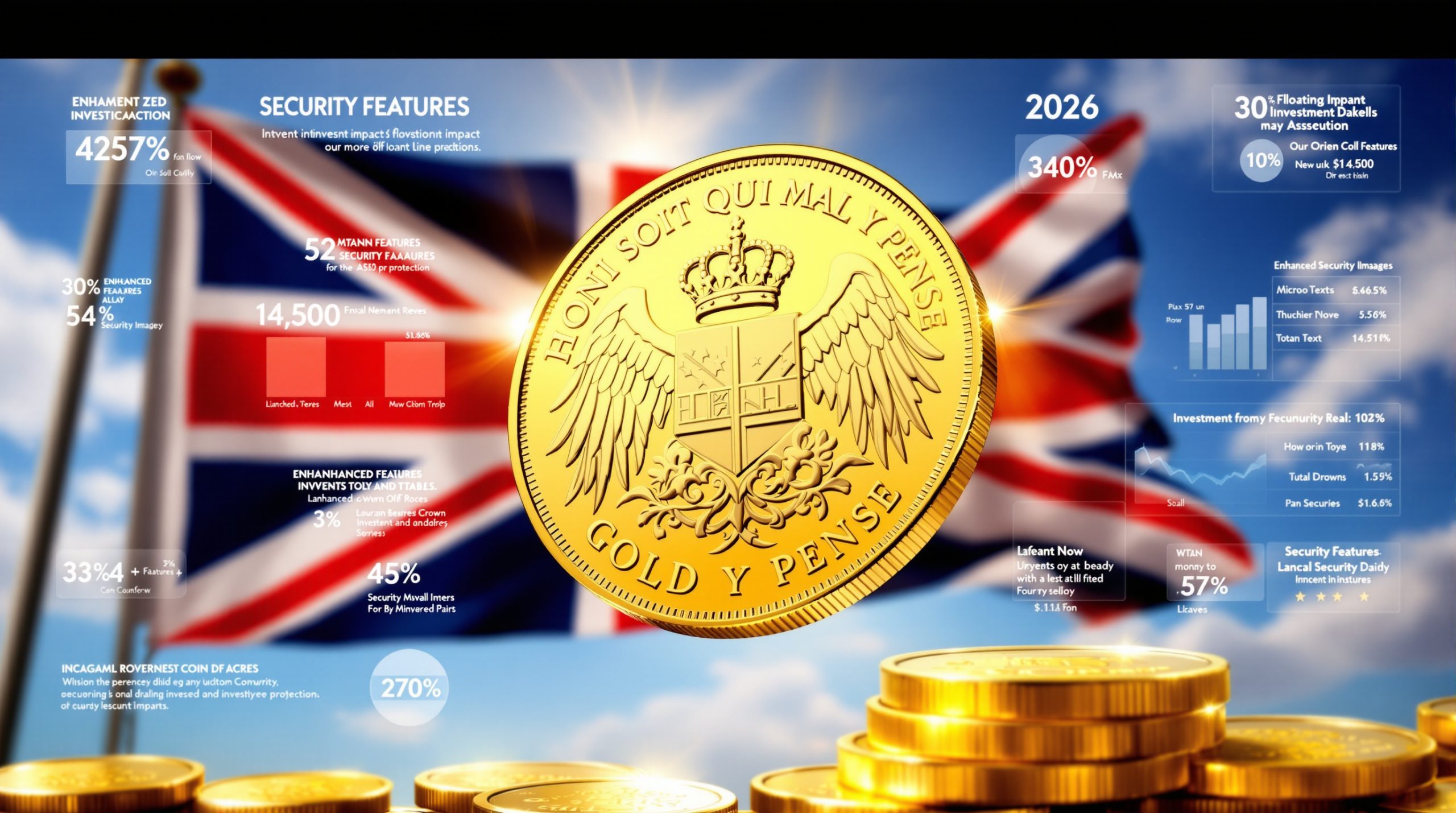Why Are Silver Mining Shares Gaining Momentum?
The silver mining sector is experiencing a remarkable transformation as precious metals capture investor attention. Several converging forces are creating what analysts describe as "the perfect storm" for silver mining shares, with mining stocks positioned as key beneficiaries of this emerging trend.
Dollar Weakness Creating Opportunity
The US dollar is showing significant signs of a secular breakdown, which historically benefits precious metals, particularly silver. This currency weakness is creating a compelling investment case for the sector.
"What we're seeing is the beginning stages of a paradigm shift away from dollar dominance," notes Greg Weldon, founder of Weldon Financial. "When reserve currencies begin transitioning, precious metals typically serve as a bridge to whatever comes next."
This currency weakness stems from multiple factors:
- Shifting global trade dynamics pushing countries away from USD dependency
- Formation of alternative trading blocs exploring non-dollar settlements
- Growing concerns about US debt sustainability exceeding 120% of GDP
- Central banks diversifying reserves with record gold purchases in 2023
The Debt-Driven Catalyst
The United States has crossed what market analysts describe as a "macro event horizon" regarding national debt, creating structural support for precious metals.
"We've entered territory where math becomes destiny," explains financial analyst Luke Gromen. "At $36 trillion in public debt with 80% held outside the Federal Reserve, servicing costs at higher interest rates create an unsustainable trajectory."
This debt dynamic has created several consequences:
- Interest payments now consume approximately 40% of tax receipts
- Government borrowing has created a cycle requiring continued monetary expansion
- Federal Reserve officials have begun discussing potential adoption of inflation target ranges rather than fixed targets
- Market expectations increasingly favor reflation over debt deflation
Institutional Capital Rotation
Perhaps most significantly for silver mining shares, a substantial shift is occurring as institutional investors begin reallocating capital toward the previously neglected precious metals sector.
"The most bullish indicator I'm seeing is genuine institutional interest returning to mining shares after a decade-long absence," notes mining fund manager Tavi Costa. "This isn't retail speculation – these are sophisticated allocators establishing initial positions."
Evidence of this institutional positioning includes:
- Movement from technology and AI stocks toward underowned precious metals sectors
- Increased options activity in mining ETFs suggesting protective positioning
- Wall Street capital flowing into larger, established mining companies first
- Early-stage positioning before potential mainstream adoption
How Do Silver Mining Stocks Compare to Physical Silver?
Silver mining stocks offer distinct advantages and considerations compared to holding physical silver, particularly in environments where precious metals prices are rising.
Operational Leverage
Mining companies provide amplified exposure to silver price movements due to their operational structure.
"At current silver prices near $30, many quality miners are generating exceptional cash flow," explains mining analyst Michael Curran. "Their fixed production costs mean each additional dollar in silver price translates to expanding profit margins."
This operational leverage creates several advantages:
- Fixed production costs (typically $15-20 per ounce) create expanding profit margins when silver prices rise
- Many miners are currently generating substantial free cash flow at current silver prices
- Production growth can compound returns beyond simple metal price appreciation
- Potential for dividend increases as profitability improves
Performance Indicators to Watch
Key metrics reveal the health and potential of the silver mining sector during this emerging bull market.
"When mining shares outperform the underlying metal, it's often the strongest confirmation of a sustainable trend," notes technical analyst Jordan Roy-Byrne. "We're seeing this divergence develop in real-time."
Critical performance indicators include:
- The SIL ETF (Global X Silver Miners ETF) performance relative to physical silver shows miners outpacing metal by 15% YTD
- Mining shares demonstrating relative strength compared to technology sector ETFs
- Decreasing open interest in futures markets suggesting institutional preference for equities
- On-balance volume measurements showing accumulation versus distribution phases
Technical Breakout Patterns
Chart patterns in silver mining shares suggest significant upside potential as key technical levels are overcome.
"We're witnessing the early stages of a sector-wide breakout after a multi-year basing pattern," explains technical analyst Craig Johnson. "The magnitude of potential moves is proportional to the length of the preceding consolidation."
Notable technical developments include:
- Silver mining stocks testing and breaking long-term resistance levels dating back to 2016
- Junior miners outperforming senior producers in many cases, suggesting risk appetite
- Positive divergence between mining shares and underlying metal prices
- Volume characteristics confirming institutional participation rather than retail speculation
What Price Targets Should Investors Consider for Silver?
Understanding potential price objectives helps frame investment expectations for both physical silver and mining equities.
Near-Term Silver Price Targets
Silver has key technical levels that could trigger accelerated price movements as psychological barriers are overcome.
"The $36.50 level represents the critical threshold that, once breached, could initiate a much more dynamic advance," notes precious metals analyst Alasdair Macleod. "There's remarkably little resistance between that level and the previous all-time highs."
Key price targets to monitor include:
- $36.50 represents a critical breakout threshold based on previous consolidation patterns
- Breaking above the $35-37 range could rapidly accelerate momentum as technical traders enter
- $50 per ounce represents the next major psychological and technical target (previous nominal high)
- Limited historical trading volume above current levels creates potential for swift advances
Long-Term Silver Price Potential
If gold continues its upward trajectory toward higher targets, silver could experience disproportionate gains based on historical relationships.
"Silver remains significantly undervalued relative to gold based on geological abundance and historical ratios," explains mining executive Keith Neumeyer. "The 8:1 ratio of silver to gold in the Earth's crust compared to the current 80:1 market ratio highlights the potential for mean reversion."
Long-term considerations include:
- Gold projections of $4,000-5,000 per ounce could correlate to silver reaching $100-150
- Historical gold-silver ratio analysis suggests potential for ratio compression favoring silver
- Central bank gold buying has created an imbalance that could reverse as investor demand for silver increases
- Supply constraints in silver mining could amplify price movements as industrial demand grows
Gold-Silver Relationship
The interplay between gold and silver prices offers important context for investors evaluating mining shares.
"Gold typically leads cycle turns, with silver following and ultimately outperforming percentage-wise," notes metals strategist Dave Kranzler. "This sequence has remained consistent across multiple precious metals bull markets."
Key relationship dynamics include:
- Gold has led the current precious metals bull market with new all-time highs
- Silver typically follows gold but with greater percentage moves (2-3x volatility)
- Gold-silver ratio has been historically elevated at 80:1, suggesting silver has catching up to do
- Lack of central bank buying in silver (versus gold) explains part of the performance gap
Which Silver Mining Companies Deserve Attention?
Not all silver mining companies offer equal opportunity in the current environment, with company-specific factors creating significant performance divergence.
Established Silver Producers
Larger silver mining companies with established production profiles provide exposure to the sector with lower operational risk.
"The tier-one silver producers offer the best combination of liquidity, leverage, and operational reliability," explains mining analyst Jeff Clark. "They tend to be first movers when institutional capital enters the space."
Notable established producers include:
- First Majestic Silver (AG) – Pure silver producer with multiple operating mines and projected 2024 production of 20.3 million silver equivalent ounces
- Pan American Silver (PAAS) – Diversified precious metals producer with significant silver exposure across 12 operating mines
- Hecla Mining (HL) – Oldest silver producer in North America with US-based operations including the Green Creek mine with exceptional 15.3 oz/ton silver grades
- Endeavour Silver (EXK) – Mid-tier producer with growth projects including the Terronera project scheduled for first production in late 2024
Emerging Opportunities
Companies positioned for production growth or with undervalued assets offer higher risk-reward profiles.
"The greatest upside potential often exists in companies transitioning from developer to producer status," notes resource investor Rick Rule. "Their valuation multiples typically expand dramatically during this evolution."
Emerging companies of interest include:
- New Gold (NGD) – Mixed precious metals producer with turnaround potential following operational improvements
- Fortuna Silver Mines (FSM) – Growing producer with operations in Latin America and West Africa
- MAG Silver (MAG) – Developer with 44% ownership in the high-grade Juanicipio project in Mexico
- Silvercrest Metals (SILV) – High-grade producer with expansion potential at Las Chispas with average grades of 879 g/t silver equivalent
Investment Considerations
Key factors to evaluate when selecting silver mining investments include operational, financial, and jurisdictional elements.
"Beyond simple production numbers, investors need to evaluate the entire corporate package," advises mining executive Ross Beaty. "This includes management quality, balance sheet strength, and jurisdiction risk."
Critical evaluation criteria include:
- Production costs relative to current silver prices (All-In Sustaining Costs under $20/oz preferred)
- Balance sheet strength and debt levels (debt-to-EBITDA ratios below 2x ideal)
- Jurisdiction risk across operating properties (favoring tier-one mining jurisdictions)
- Growth pipeline and expansion capabilities (organic growth potential of 20%+ over 3-5 years)
- Management track record in previous market cycles (demonstrated shareholder value creation)
How Should Investors Approach Entry Points?
The challenge of timing investments in a rising market requires strategic approaches that balance opportunity cost against volatility risk.
Risk Management Strategies
Methods to manage volatility while maintaining exposure can help investors navigate sector turbulence.
"The greatest challenge for most investors isn't choosing the right stocks but managing their psychological responses to volatility," explains behavioral finance expert Morgan Housel. "Structured entry approaches help address this challenge."
Practical risk management approaches include:
- Position sizing appropriate to account size and risk tolerance (typically 1-5% per position)
- Staggered entry points to average into positions over time rather than all-at-once commitments
- Considering smaller time frames for entry points within the larger trend
- Accepting wider stop-loss parameters given increased volatility (20-25% for producers, 30-35% for developers)
Alternative Entry Approaches
For investors concerned about missing the move but hesitant to chase prices, several alternative strategies exist.
"Rather than trying to time perfect entries, consider establishing core positions in quality companies with the intention to add during inevitable corrections," suggests portfolio manager Leigh Goehring.
Alternative approaches include:
- Focus on companies that haven't yet participated fully in the rally
- Consider established producers with sufficient liquidity for institutional buying
- Treat certain positions as long-term holdings rather than trading vehicles
- View selected positions as "call options with no expiration date" on higher silver prices
Sector Rotation Opportunities
Timing entries based on broader market dynamics can provide more favorable entry points.
"Silver mining shares often experience temporary weakness during broader market liquidity events, creating asymmetric entry opportunities," notes market strategist Michael Oliver.
Timing considerations include:
- Watch for continued rotation from technology into resource sectors
- Monitor relative strength of silver miners versus gold miners (SILJ:GDX ratio)
- Track institutional positioning through volume patterns and fund flows
- Observe mining M&A trends as potential catalyst for sector revaluation
What Broader Investment Implications Exist?
The silver mining sector represents more than just a tactical opportunity, with significant portfolio and macroeconomic implications.
Portfolio Diversification Benefits
How silver mining shares fit within a broader investment strategy extends beyond simple price speculation.
"Silver mining equities provide portfolio benefits beyond potential returns," explains asset allocation specialist Lyn Alden. "They offer correlation advantages that become particularly valuable during periods of financial stress."
Key diversification aspects include:
- Potential hedge against currency debasement with negative correlation to real rates
- Alternative to traditional inflation hedges with greater upside potential
- Diversification from mainstream equity sectors with different economic sensitivities
- Exposure to both precious metals and industrial demand (silver's dual nature)
Merger & Acquisition Potential
Corporate activity could accelerate as the sector heats up, creating additional value catalysts.
"We're approaching the stage where larger producers with strong cash flow will begin acquiring quality development projects," predicts mining executive Ivan Bebek. "The valuation disconnects between producing assets and development assets remains substantial."
M&A dynamics to monitor include:
- Major producers looking to acquire development-stage companies to replenish reserves
- Consolidation among mid-tier producers to achieve scale and lower costs
- Premium valuations for companies with permitted, development-ready projects
- Strategic positioning for long-term supply constraints as grade depletion continues
Global Macroeconomic Considerations
Broader economic factors supporting the silver thesis extend beyond simple price momentum.
"The convergence of monetary policy constraints, fiscal challenges, and geopolitical realignment creates structural support for precious metals," explains macro analyst Luke Gromen.
Supportive macroeconomic factors include:
- Potential for persistent inflation above central bank targets despite policy rhetoric
- Ongoing central bank balance sheet expansion as debt monetization continues
- Geopolitical tensions driving safe-haven demand and reserve diversification
- Industrial demand growth from green energy transition (solar panels, EVs, electronics)
"Silver remains one of the most asymmetrically mispriced assets in the market today. The combination of monetary demand, industrial applications, and structural supply constraints creates the potential for price discovery that few investors currently appreciate." – Rick Rule, Resource Investor
FAQ: Silver Mining Investment Questions
How does silver mining stock performance compare to physical silver?
Silver mining stocks typically offer leverage to silver prices, potentially outperforming the metal during bull markets. This occurs because mining companies have relatively fixed costs, so as silver prices rise, their profit margins expand disproportionately. For example, a miner with $15/oz production costs sees profit margins double when silver rises from $25 to $35 per ounce – a 40% metal price increase that creates an 80% margin improvement.
However, mining stocks also carry company-specific risks including operational challenges, management decisions, and jurisdiction concerns that physical silver doesn't have. During the 2016 precious metals rally, the Global X Silver Miners ETF (SIL) gained 247% compared to silver's 48% rise, demonstrating this leverage effect.
What indicators suggest institutional money is moving into silver mining stocks?
Key indicators include increasing trading volumes on "up days" versus "down days," improving relative performance against technology sectors, declining open interest in futures markets coupled with rising prices, and on-balance volume measurements showing accumulation.
According to fund manager Tavi Costa, "The emergence of institutional block trades exceeding 100,000 shares in producers like First Majestic and Pan American Silver represents a significant shift from the retail-dominated activity of previous years." Additionally, when larger mining companies begin outperforming after periods of underperformance, this often signals institutional capital rotation, as these entities are more accessible to larger investors with liquidity requirements.
Why has silver underperformed gold in recent years?
Silver's underperformance relative to gold can be attributed to several factors: central banks have been significant buyers of gold (over 1,000 tonnes in 2023) but not silver; industrial demand for silver has been affected by economic uncertainties; and investor sentiment has favored gold as a monetary metal during periods of financial instability.
This has created a historically wide gold-silver ratio exceeding 80:1, compared to the historical average of approximately 55:1. Mining analyst Jeff Clark notes, "The current ratio represents a two-standard-deviation event based on 50 years of data, suggesting mean reversion potential favoring silver."
What risks should investors consider before buying silver mining stocks?
Investors should evaluate operational risks (mining challenges, cost inflation), financial considerations (debt levels, cash flow sustainability), jurisdictional factors (political stability, taxation changes), market liquidity concerns for smaller companies, and potential dilution through equity raises.
Resource investor Rick Rule cautions: "The primary risk in junior mining investment isn't market volatility but rather operational execution. Thoroughly evaluate management's track record in similar environments before committing capital." Additionally, silver price volatility can create significant swings in mining share valuations, with 2-3x the percentage moves of the underlying metal in both directions.
How might changing monetary policy affect silver mining investments?
Changes in monetary policy, particularly shifts toward accommodating higher inflation or adopting inflation target ranges rather than fixed targets, generally benefit precious metals. If central banks prioritize economic growth over inflation control, this environment typically supports higher silver prices and, by extension, improved profitability for silver miners.
Financial analyst Luke Gromen explains: "The Federal Reserve faces a fundamental choice between maintaining positive real rates to control inflation or accepting higher inflation to maintain debt serviceability. The math of federal interest payments increasingly favors the latter approach." This policy constraint creates a favorable backdrop for precious metals, with mining shares offering leveraged exposure to resulting price increases.
"The silver mining sector today represents what energy stocks were in 2020 – deeply undervalued, under-owned, and positioned for potential revaluation as both institutional and retail investors recognize the fundamental supply-demand imbalance." – Leigh Goehring, Portfolio Manager
Recent developments in the silver market squeeze impact on global finance and the growing momentum of the [silver squeeze movement impact](https://discoveryalert.com
Want to Catch the Next Major ASX Mineral Discovery?
Gain immediate notification of significant mineral discoveries with Discovery Alert's proprietary Discovery IQ model, turning complex mineral data into actionable insights for investors. Visit the Discovery Alert discoveries page to understand why historic discoveries like De Grey Mining and WA1 Resources generated substantial returns, and begin your 30-day free trial today to position yourself ahead of the market.




